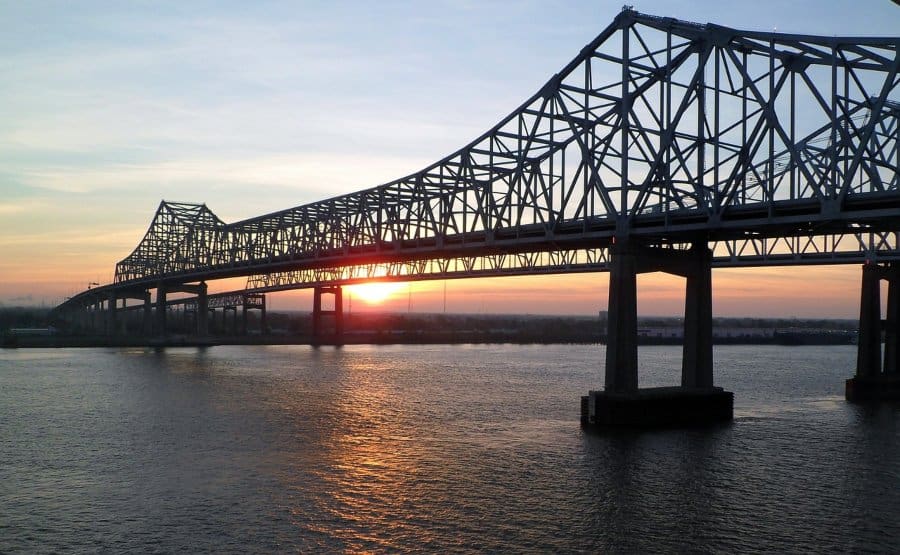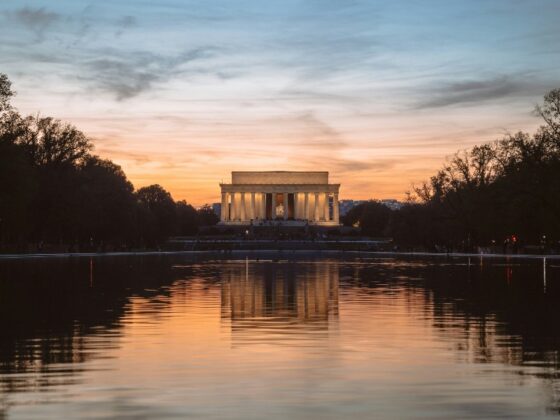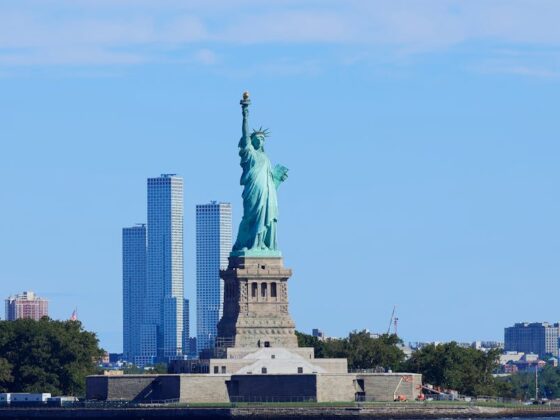Rivers have always been the lifelines of civilizations, and the United States is no exception, boasting some of the world’s most significant and diverse river systems. Among these aquatic marvels, one river stands out for its length or volume and its astonishing breadth: the Mississippi River. Often celebrated in literature, history, and culture, the Mississippi holds the title of the widest river in the US. But what does “widest” truly mean in the context of rivers, and how does the Mississippi’s width compare to other significant rivers domestically and globally? This article aims to explore the grandeur of the Mississippi River, delving into its measurements, ecological impact, and the profound role it plays in shaping the environmental and cultural landscape of the United States.
What is the widest river in the US?
The widest river in the United States is the Mississippi River, which, at its widest point, stretches out over a mile wide. However, it’s important to note that a river’s width can vary significantly depending on specific criteria, such as measuring its widest point, average width, or considering its estuary. The Mississippi River, renowned for its historical significance and ecological diversity, flows from northern Minnesota to the Gulf of Mexico, spanning approximately 2,340 miles. Its vast width not only supports a rich ecosystem but has also played a crucial role in the transportation, economy, and cultural heritage of the United States, making it a true natural wonder in the realm of American rivers.
The Mississippi River: The Widest River In The US
The Mississippi River, often hailed as the backbone of North America’s river systems, stands out as the widest river in the United States. This majestic waterway, known for its historical, economic, and ecological significance, presents several key points that highlight its grandeur and importance:
Geographical Expanse: Stretching over 2,340 miles from its source at Lake Itasca in Minnesota to its mouth in the Gulf of Mexico, the Mississippi River traverses ten states, showcasing the diversity of the American landscape. Its watershed is the fourth largest in the world, covering about 1.2 million square miles, including parts of two Canadian provinces.
Width and Scale: The Mississippi River expands over a mile wide at its widest point, though its width varies significantly along its course. This vast expanse facilitates a rich ecosystem and supports various aquatic and terrestrial life forms.
Historical and Cultural Impact: The river has played a pivotal role in the history of the United States, from serving as a critical transportation route during the era of exploration and trade to inspiring countless works of literature, music, and art. It has been a symbol of freedom, a boundary, and a source of livelihood for many generations.
Economic Significance: The Mississippi River is a vital artery for transporting agricultural and industrial products, linking the interior of the United States to markets worldwide. It supports a robust economy based on shipping, fishing, agriculture, and tourism, making it an invaluable resource for the nation.
Environmental and Ecological Importance: The river’s ecosystem is incredibly diverse home to numerous species of fish, birds, and other wildlife. Its wetlands and floodplains are crucial in natural flood management, water purification, and habitat preservation.
Challenges and Conservation Efforts: The Mississippi River faces several environmental challenges, including pollution, habitat loss, and the impacts of climate change. Conservation efforts are underway to address these issues, aiming to preserve the river’s health and vitality for future generations. Initiatives include habitat restoration, pollution control measures, and sustainable water management practices.
Comparison With Other Major US Rivers
When comparing the Mississippi River to other major rivers in the United States, its unique characteristics and sheer scale become evident, particularly in terms of width, length, ecological impact, and historical significance. Here’s a comparative look at how the Mississippi stands alongside other significant US rivers:
Missouri River:
Often regarded as the Mississippi’s chief tributary, the Missouri River is longer, stretching approximately 2,341 miles, making it the longest river in North America. However, in terms of width, the Mississippi surpasses the Missouri. The confluence of these two rivers near St. Louis, Missouri, marks a significant point where their combined waters lead to the vast width that characterizes the Mississippi further downstream.
Yukon River:
Running through Canada and Alaska, the Yukon River is another major North American river, covering about 1,980 miles. While it’s known for its historical importance during the Klondike Gold Rush, its width and ecological impact are less when compared to the expansive Mississippi River, which serves a broader ecological and economic role across the central United States.
Colorado River:
Famous for carving out the Grand Canyon, the Colorado River is one of the principal rivers of the Southwestern United States and northern Mexico, extending about 1,450 miles. Though it’s much shorter and narrower than the Mississippi, the Colorado River is significant for its deep canyons, whitewater rapids, and role in supplying water to millions of people in arid regions.
Columbia River:
Flowing approximately 1,243 miles, the Columbia River is the largest in the Pacific Northwest region of North America. While it doesn’t match the Mississippi’s width, it is renowned for its hydroelectric power production, contributing significantly to the region’s power supply. The Columbia’s impact on local ecosystems and economies, particularly in salmon fishing, is profound, though different from the Mississippi’s wide-ranging influence.
Rio Grande:
As North America’s fourth longest river system, the Rio Grande stretches about 1,896 miles, forming part of the border between the United States and Mexico. Although it is a critical water source for agriculture and populations in a largely arid region, its width and volume are considerably less than the Mississippi’s, reflecting its role in a more specific geographical and ecological context.
The River’s Role In American Culture
The Mississippi River’s imprint on American culture, literature, and history is deep and enduring, reflecting its role as more than just a waterway but a symbol of the American spirit. This river has inspired artists, writers, and musicians and has been a backdrop to critical historical events that have shaped the nation. Its significance weaves through the fabric of American identity in several key ways:
The Mississippi River has been a muse for American literature, most notably for Mark Twain, who immortalized it in “The Adventures of Tom Sawyer” and “Adventures of Huckleberry Finn.” Twain’s works capture the essence of life along the river during the 19th century, reflecting the complexities of American society, the spirit of adventure, and the profound relationship between humans and nature.
The river has developed American music genres, including blues, jazz, and rock ‘n’ roll. Cities along the Mississippi, like New Orleans and Memphis, are considered birthplaces of these music styles, where the river’s presence has inspired countless musicians. The Mississippi has also been a central character in American folklore, symbolizing freedom, hardship, and the pursuit of a better life.
Throughout American history, the Mississippi River has been a strategic site for military campaigns, trade, and exploration. It was a crucial boundary in early America, a gateway to the western territories, and a contested border during the Civil War. The river’s role in commerce, particularly in the cotton and slave trades, has had a lasting impact on the economic and social fabric of the nation.
The Mississippi has been a backbone of American industry and agriculture, facilitating the transport of goods across the country. Its waters have powered mills, supported agriculture, and enabled significant cities to rise along its banks. The river’s influence on the economic development of the United States cannot be overstated, contributing to the nation’s emergence as a global economic power.
The river has also played a role in the environmental movement, highlighting the need for conservation and sustainable management of natural resources. Events like the Great Flood of 1927 have underscored the river’s power and the human impact on natural systems, leading to significant environmental legislation and efforts to protect the river’s ecosystem.
Beyond its physical presence, the Mississippi River holds a symbolic place in the American consciousness as a representation of exploration, natural beauty, and the challenges of coexisting with the natural world. It embodies the idea of the frontier and the endless possibilities of the American landscape.
The Impact Of The River’s Width On Flood Control
The width of the Mississippi River has significant implications for flood control, influencing both the management strategies employed and the challenges faced in mitigating flood risks along its extensive course. While majestic, the river’s broad expanse presents unique difficulties and necessitates comprehensive approaches to flood management. Here are key points on how the river’s width impacts flood control:
- Increased Floodplain Area: The vast expanse of the Mississippi River means it has a vast floodplain, which naturally absorbs overflow during periods of high water. While floodplains serve as natural buffers against flooding, the extensive floodplain of the Mississippi also requires significant human intervention to protect populated areas and agricultural lands from flood damage.
- Complexity in Engineering Solutions: The river’s width and water volume demand large-scale engineering works to control floods. Levees, dams, spillways, and floodways have been constructed along the river to manage flow and protect adjacent communities. However, the effectiveness of these structures can be compromised by the sheer scale of the river, leading to challenges in maintaining and upgrading these flood defenses.
- Altered Flow Dynamics: Human interventions, such as the construction of levees and the river’s channelization, have altered its natural flow dynamics. While these measures aim to protect certain areas from flooding, they can inadvertently increase flood risks downstream or in other parts of the floodplain by constricting the river’s width and accelerating water flow, leading to higher water levels during flood events.
- Sedimentation and Navigation Channels: The Mississippi River’s width and flow carry vast amounts of sediment, which can accumulate and alter the riverbed. Dredging is routinely conducted to maintain navigation channels, which can also affect the river’s capacity to disperse floodwaters. The management of sediment and maintenance of channels are critical to ensuring the river’s width does not exacerbate flooding.
- Role of Floodways and Spillways: To mitigate the impact of the river’s width on flood risks, floodways and spillways divert excess water away from populated areas. These structures are designed to handle overflow during peak flood events, redirecting water into designated areas that can absorb the impact. The strategic use of these features is crucial in managing the flood potential of such a wide river.
Conclusion
With its impressive width and vast expanse, the Mississippi River stands as a monumental feature of the United States’ geographical, cultural, and historical landscape. Its role as the widest river in the US has far-reaching implications, from fostering rich ecosystems to shaping the economic and cultural development of the nation. The river’s width, while presenting challenges in flood control and management, also symbolizes the grandeur and dynamic nature of the American environment. Through centuries, the Mississippi has been a lifeline, a source of inspiration, and a subject of continuous study and admiration. It has witnessed the complexities of American history, from the early days of exploration and settlement to the challenges of modern environmental management. The strategies to navigate its waters and protect its banks from flooding reflect a broader narrative of human ingenuity and the relentless pursuit of balance between natural forces and societal needs.










